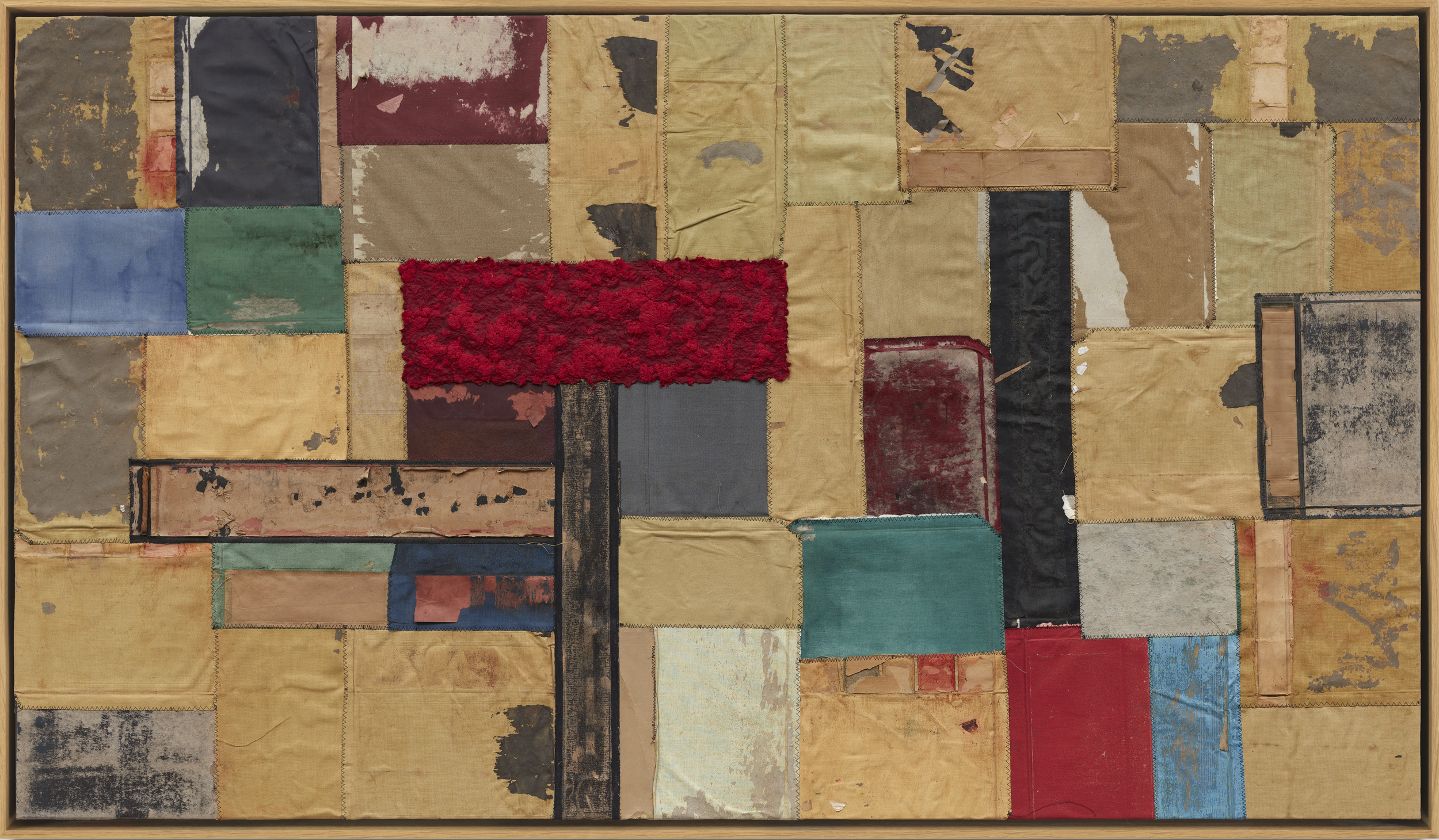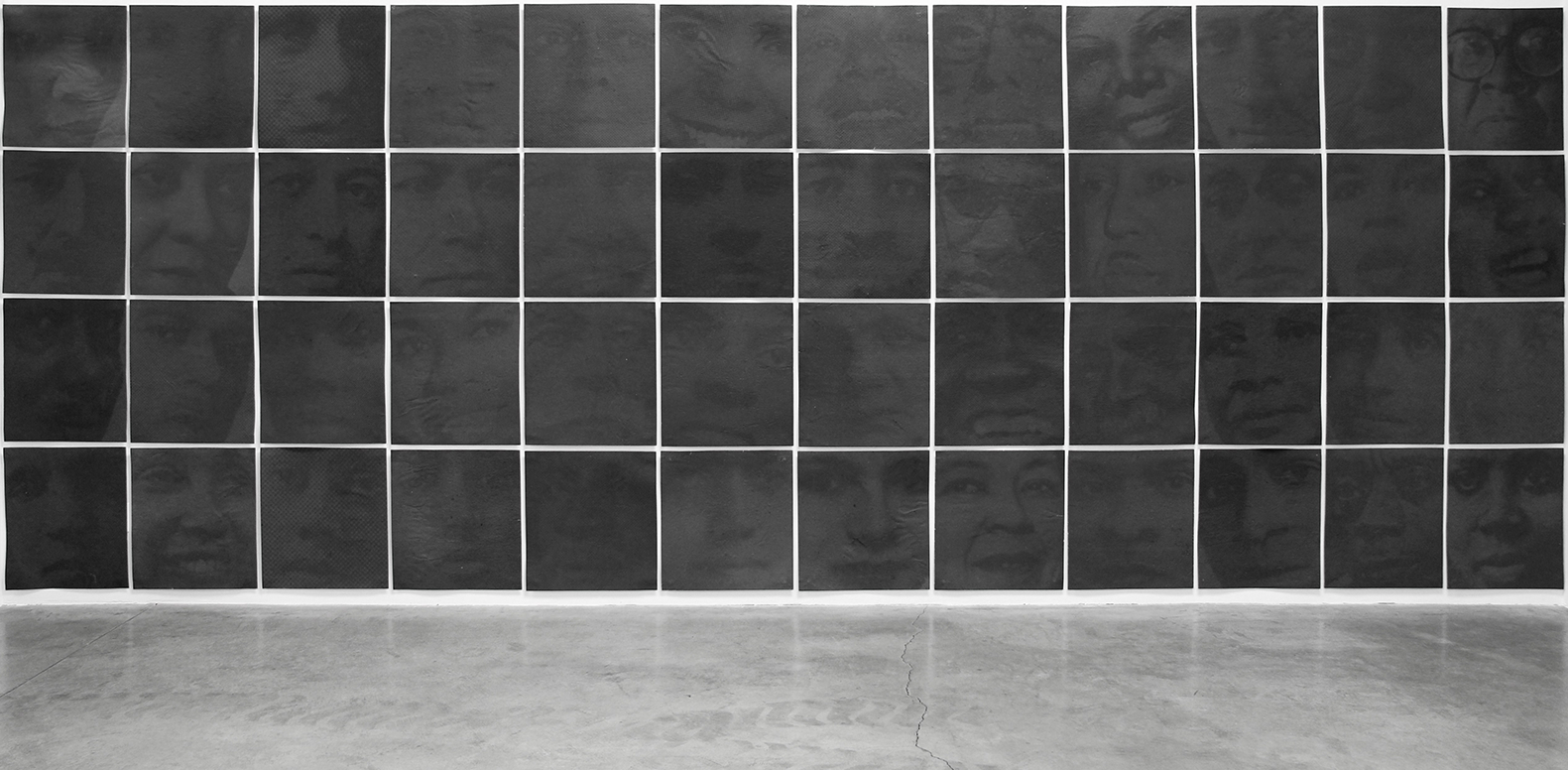
May 2023
Samuel Levi Jones
48 portraits (underexposed), 2012 (Nina Simone, detail). Image courtesy of the artist and Galerie Lelong & Co.
“I feel extremely fortunate to exist in a way that allows me to observe, process, and question problematic social constructs.”
—Samuel Levi Jones
Dan Golden speaks with the artist about the significance of source material in his work, confronting systems of oppression, and a new exhibition at Galerie Lelong & Co. in New York.
Samuel Levi Jones is inspired by questions of authority, representation, and recorded history. The artist is known for challenging historical and contemporary power structures through the act of taking apart "source" material, generating new perspectives from which to grapple with society’s ongoing ignorance and apathy. Jones’s practice centers on physically undoing objects associated with systems of power and control, often rearranging deconstructed books into grid-like compositions that expose their flaws and question their assumed command of the truth. As he explains, “I am ultimately thinking about information that is selectively left out.” His works examine urgent questions of how oppression is embedded in systems of law enforcement and education, as well as industries in medicine, athletics, and fine art.
Dan Golden: Congratulations on your new exhibition, Conscious Intuition, at Galerie Lelong & Co. in New York. Please give us a brief introduction to the show. (and what the title means to you)
Samuel Levi Jones: The title, Conscious Intuition, is about one’s association with the systems we live in and whether we choose to challenge them. The exhibition expands on my investigation of deconstructing materials associated with power structures - mainly law and encyclopedic books. My action is reimagining texts that uphold exclusion and inequality.
Conscious Intuition, 2022-23, pulped law book covers, pulped US flag, and stars from US flag on canvas, triptych, each: 30 x 30 x 2 1/2 inches. Image courtesy of the artist and Galerie Lelong & Co.
Discerning faculty, 2023, deconstructed and pulped law books, medical books, bound newspaper covers, and US flag on canvas, 40 x 70 inches. Image courtesy of the artist and Galerie Lelong & Co.
DG: This new exhibition includes an important early work of yours, 48 Portraits (underexposed). Can you share the background of this piece and the choice to have in the new show?
SLJ: 48 Portraits (underexposed) was directly inspired by Gerhard Richter's 48 Portraits, where he depicted 48 white men from the encyclopedia. My response was the first time I made paper from deconstructed encyclopedias. I repurposed the pages from a set of 1972 Encyclopedia Britannica and chose to depict 48 influential Black icons (24 Black men and 24 Black women) excluded from the edition. It began my thinking about materials and objects in this didactic way, and a decade later, it anchors my work.
48 Portraits (underexposed), 2012, each, framed: 26 5/8 x 24 1/8 x 1 1/2 inches. Image courtesy of the artist and Galerie Lelong & Co.
DG: Can you provide insight into your creative process and material choices?
SLJ: Using the encyclopedia was not just about a response to Richter but more about how these books are a tool of pedagogy often rooted in white supremacy. The use of law books references the systemic issues within the law system, whereas using encyclopedias is about the broader canon. Painting with pulp is a shift from my traditional composing by sewing together book covers. In the very first pulp work I composed, I told myself to loosen up and not overthink.
DG: I’m curious to learn more about how your recent sculptural pieces reflect and extend your work.
SLJ: My first effort in creating these sculptural works was in 2014 at Recology in San Francisco. I sourced a shipping crate from the dump, which made me think of commerce - particularly the Middle Passage. I used the crate as a mold and filled it with pulped encyclopedia pages, considering the act of destroying Eurocentric material and returning it to its origin. This work, along with the installation, The Library of Alexandria, was a way of getting off the wall and engaging physically with viewers. I want to draw them in deeper, from observers to participants.
Lost Truth, 2023, pulped encyclopedia pages and pulped law book covers, crate, 71 3/8 x 43 3/8 x 11 inches. Image courtesy of the artist and Galerie Lelong & Co.
DG: What do you view your role as an artist to be?
SLJ: I wouldn't necessarily describe any part of my role as an artist as unique. However, I feel extremely fortunate to exist in a way that allows me to observe, process, and question problematic social constructs.
DG: You have another solo show coming up later this year with Galerie Lelong & Co. in Paris. Can you give us a preview of that exhibition? Also, anything else you have coming up soon that you can tell us about? I read that you were developing something called the Marion Legacy Project.
SLJ: I'm still sussing out my autumn exhibition in Paris, but it will be very different from what's in NYC. Regarding the Marion Legacy Project, I hope to create a public work in response to the 1930 lynching in my hometown of Marion, IN. Three black men were accused of a crime, and without due process, two were pulled from their jail cells and murdered. It's an event to which I have family ties and, disappointingly, hasn't been addressed by the community in the form of a placard or any other distinction. In this country's state, we cannot move forward without dealing with our pasts. The one thing I can say about it concerning many historical events surrounding trauma is that I desire to shift the paradigm on who gets to tell the story.
Samuel Levi Jones’ solo exhibitions include The Empire is Falling at The Dayton Contemporary, Ohio; Left of Center at the Indianapolis Museum of Art at Newfields, Indiana; and Unbound, Studio Museum in Harlem, New York, New York. Recent museum exhibitions include Art of California: Greater than the Sum, SFMOMA, San Francisco, California; Duro Olowu: Seeing Chicago, Museum of Contemporary Art, Chicago; Infinite Blue at the Brooklyn Museum, New York; and Solidary & Solitary: The Joyner/Guiffrida Collection at the Smart Museum at the University of Chicago, Illinois. His work can be found in museum and public collections such as the San Francisco Museum of Modern Art, California; Art Institute of Chicago, Illinois; Los Angeles County Museum of Art, California; The Studio Museum in Harlem, New York; Whitney Museum of American Art, New York; Dallas Museum of Art, Dallas, Texas and Seattle Art Museum, Seattle, Washington. In 2014, Jones received the Joyce Alexander Wein Artist Prize, an annual award presented by The Studio Museum in Harlem, whose past recipients include prominent artists such as Leslie Hewitt, Glenn Ligon, and Lorna Simpson.
Jones was born in Marion, Indiana in 1978 and lives and works in Indianapolis, Indiana.
Photo by Shelly Given, 2023
Samuel Levi Jones
Conscious Intuition
Galerie Lelong & Co.
New York
May 11 — June 17, 2023





